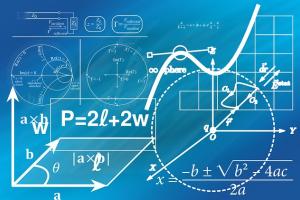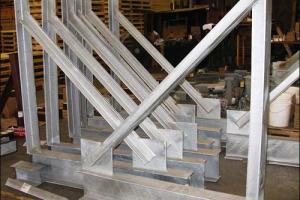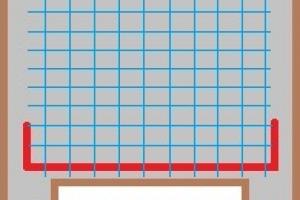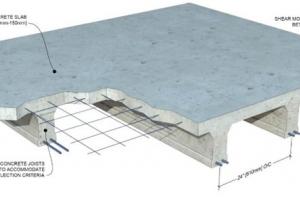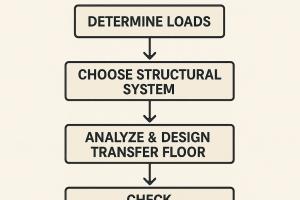Methods of Design of Concrete Slab | FEA, EFM, SM

Slabs are critical structural elements that require precise design to ensure strength, durability, and safety. Engineers use various Methods of Design of Concrete Slab, depending on complexity, loading conditions, and structural requirements.
This article explores three key slab design methods:
-
Finite Element Analysis (FEA)
-
Simplified Method
-
Equivalent Frame Method (EFM)
We’ll discuss their principles, applications, examples, and calculations to understand their advantages and limitations.
1. Finite Element Analysis (FEA)
What is FEA?
In methods of design of concrete Slab, FEA is one of the most important methods. Finite Element Analysis is a computational technique that divides a slab into small elements (meshes) to analyze stresses, deflections, and load distributions numerically.
💡 Also See: Functions of Concrete Slab
When is it used?
-
Complex geometries (irregular shapes, curved slabs)
-
Non-uniform loading (heavy machinery, dynamic loads)
-
High-rise buildings & industrial floors | Design of a Transfer Floor
Example:
-
Nuclear power plant slabs require FEA to assess thermal and mechanical stresses.
Interesting Fact:
-
FEA was first developed in the 1940s for aerospace engineering but is now widely used in civil engineering.
Calculation Example:
A slab under a point load (P) can be analyzed using FEA to determine maximum deflection (δ) and bending moments (M).
Where:
-
= Stiffness matrix of element *i*
-
= Nodal displacement
Advantages:
✔ Highly accurate for complex slabs
✔ Can model cracks, vibrations, and thermal effects
Disadvantages:
✖ Requires specialized software (e.g., ANSYS, SAP2000)
✖ Computationally expensive
2. Simplified Method (Yield Line Theory & Code-Based Methods)
What is the Simplified Method?
A hand-calculation approach based on yield line theory or code recommendations (e.g., IS 456, ACI 318).
When is it used?
-
Rectangular or simple-shaped slabs
-
Uniformly distributed loads (UDL)
-
Residential & small commercial buildings
Example:
-
Two-way slabs in apartments often use IS 456 coefficients for moment calculation.
Interesting Fact:
-
The yield line theory was developed by K.W. Johansen in the 1940s for the plastic analysis of slabs.
Calculation Example (IS 456):
For a simply supported square slab (4m × 4m) with UDL 5 kN/m²:
Bending moment (M) per unit width:
Where:
-
= Coefficient (0.062 for simply supported)
-
= Load (5 kN/m²)
-
= Span (4m)
= 0.062 \times 5 \times 4^2 = 4.96 kNm/m ]
Advantages:
✔ Quick & easy for standard cases
✔ No software needed
Disadvantages:
✖ Limited to simple geometries
✖ Less accurate for complex loads
3. Equivalent Frame Method (EFM)
What is EFM?
A semi-rigorous method where a 3D slab system is converted into 2D frames for analysis.
When is it used?
-
Flat slabs (no beams)
-
Multi-story buildings
-
Parking garages & office spaces
Example:
-
Flat plate construction in high-rises often uses EFM for column-slab interaction analysis.
Interesting Fact:
-
EFM was introduced in ACI 318 as an alternative to the direct design method (DDM).
Calculation Example:
For a flat slab with columns at 6m spacing, the equivalent beam width (bₑ) is calculated as:
Where:
-
= Column width (0.5m)
-
= Slab thickness (0.2m)
_e = 0.5 + 2 (1.5 \times 0.2) = 1.1m ]
Advantages:
✔ Balances accuracy & simplicity
✔ Suitable for flat slabs & drop panels
Disadvantages:
✖ Requires manual adjustments
✖ Less precise than FEA
Comparison Table
| Method | Best For | Accuracy | Complexity |
|---|---|---|---|
| Finite Element (FEA) | Complex geometries, dynamic loads | Very High | High (Software) |
| Simplified Method | Rectangular slabs, UDL | Moderate | Low (Hand Calc) |
| Equivalent Frame (EFM) | Flat slabs, multi-story buildings | High | Medium |
Conclusion
Methods of Design of Concrete Slab....
-
FEA is best for highly complex slabs needing detailed analysis.
-
Simplified methods work well for standard residential slabs.
-
EFM is ideal for flat slabs in commercial buildings.
Did You Know?
-
The Burj Khalifa used FEA to model wind and seismic effects on its massive slabs!
-
Waffle slabs often use EFM for efficient column-slab interaction design.



